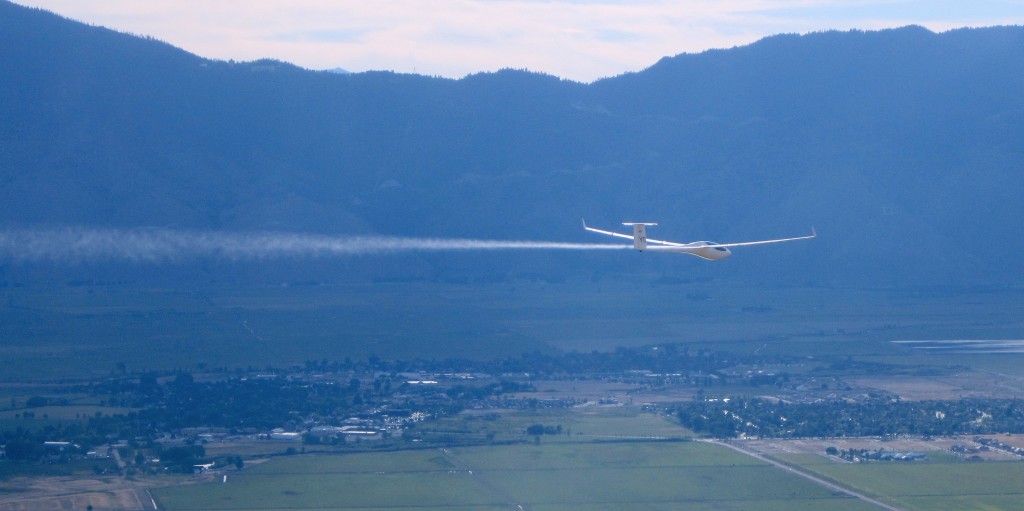Check out Rick Indrebo final gliding into the finish after the fifth day’s task! We ended at the same time, from roughly the same direction, so we went in side-by-side. I shot this photo, which you should click to view full-size:
All contest flights end with a final glide. Somewhere out on the task, you reach a location and altitude where you can reach the finish just by gliding—you don’t have to circle in lift anymore. If you plan really well (or get lucky), you’ll be able to nose down and fly at high speeds. One way this can happen is for a strong thermal to push you far above the minimum final glide altitude very quickly—if that happens, you dive down to the finish, in some cases pushing the airspeed up close to the redline.
Overheard at the airport: “If you don’t scare yourself on final glide, you’re not doing it right.”
Most competition gliders have some kind of display in the cockpit that can tell the pilot how high they’d have to climb at their current location to reach final glide. In JOY, Mike often leaves the Ilec SN10B glide computer on a display page that shows this figure in big numbers on the bottom left. Here we’d need to climb almost 40,000 feet—mainly because when this was taken, we would have had to glide about 180 miles to visit the remaining turnpoints and head back to Minden.
Back in the top picture, Rick is dumping out the water ballast in YC during his final glide, making the glider lighter for a safer landing. This is a beautiful sight from the ground, and in the air it was a real treat. (Gliders carry water ballast because it makes them glide faster—just like more people makes a toboggan go faster down a snowy hill.)
Here is a video shot from JOY during yesterday’s final glide. JOY doesn’t carry any water ballast because it’s flying close enough to its maximum gross weight as-is.
You’ll probably notice JOY’s wings flopping around a bit more than the airliner wings you might be used to seeing. This is normal and desirable: the flexibility gives the wing the ability to withstand sudden stresses due to turbulence and so forth.








